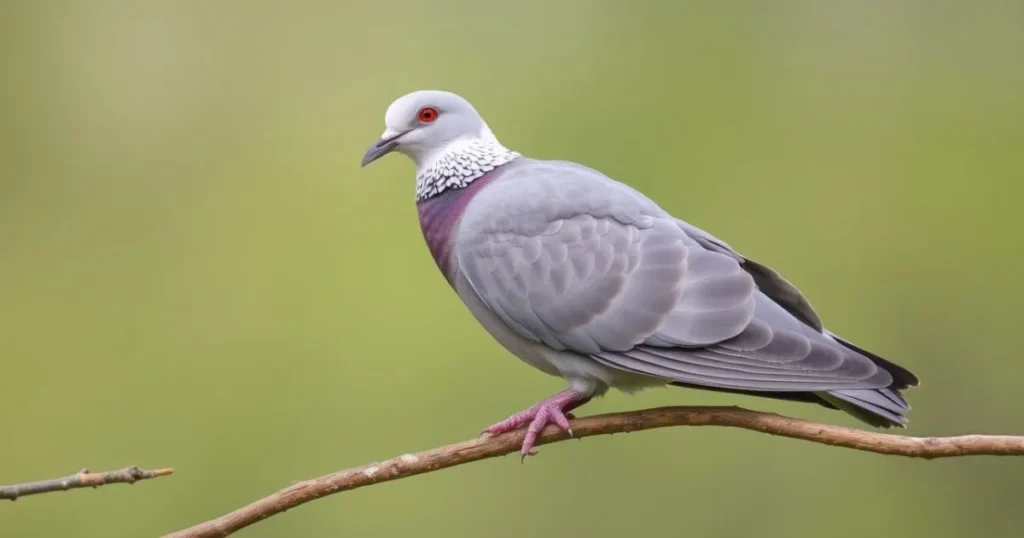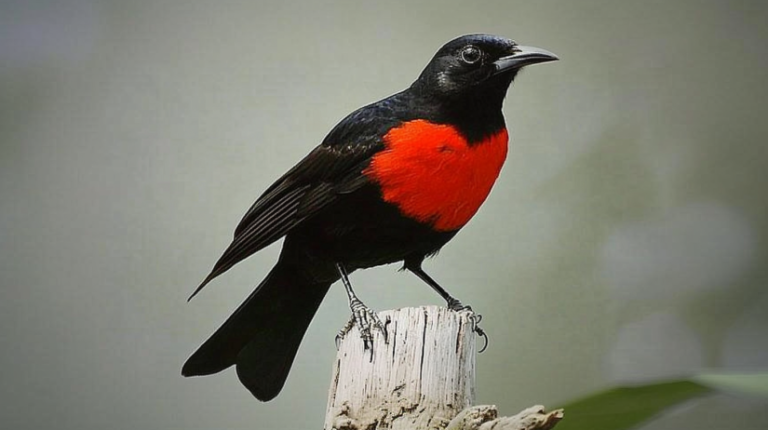The White-crowned Pigeon: An Elegant Companion for Bird Lovers
Birdwatching lets us connect with nature and see wildlife’s beauty. It offers a chance to find peace in the natural world. If you love the sound of birds or enjoy watching them fly, you might like the White-crowned Pigeon.
This bird is elegant and gentle. It’s great for anyone passionate about birds and nature. We’ll look at the White-crowned Pigeon’s features, behavior, and how to attract them to your backyard.
Whether you’re a seasoned birdwatcher or new to it, you’ll find something special about the White-crowned Pigeon. It’s a bird that can capture your heart.
| Attribute | Description |
|---|---|
| Official Name | Patagioenas leucocephala |
| Common Name | White-crowned Pigeon |
| Pet Height | 12–14 inches (30–35 cm) |
| Pet Weight | 10–12 ounces (280–340 g) |
| Lifespan | 10–15 years |
| Smartness Level | Moderate |
| Engagement in Play | Low |
| Human-Friendly | Cautious around humans |
| Animal-Friendly | May be shy around other species |
| Favorite Food | Fruits, berries, seeds |
Table of Contents
Understanding the White-crowned Pigeon
Overview of the Species
The White-crowned Pigeon, known as Patagioenas leucocephala, is part of the Columbidae family. These birds are medium-sized, growing between 12 to 14 inches long. Their most striking feature is the white crown on their grayish body.
They are known for their soft cooing calls. These sounds add a musical quality to their surroundings. Birdwatchers find joy in listening to their gentle voices.

Habitat and Distribution
White-crowned Pigeons live in tropical and subtropical forests, mangroves, and cities. They are common in the Caribbean and Florida, making them easy to spot for birdwatchers in these areas.
In Florida, they nest and roost in mangrove forests, often near native trees. They forage for food in the morning, sometimes far from their homes. They prefer the lush forests of the Keys and mainland Florida for their diet.
In the Caribbean, they nest in coastal forests and forage in various habitats. The absence of predators, like raccoons, is crucial for their nesting sites.
Key Habitats:
Tropical Forests: Dense, lush environments where they can easily find food and shelter.
Mangroves: These coastal areas provide abundant food sources, such as fruits and seeds.
Urban Areas: Surprisingly adaptable, these pigeons can thrive in populated areas, often seen in parks and gardens.

Knowing where these pigeons live helps us understand their behavior. It also increases our chances of seeing them in nature.
The Allure of the White-crowned Pigeon
Physical Characteristics and Behavior
The White-crowned Pigeon is truly elegant. Their smooth gray feathers are a stunning backdrop for their white crown. This makes them look regal as they sit on branches or stroll through gardens.
Key Characteristics:
- Size: They are about 12-14 inches long.
- Coloration: They have a gray body, a white crown, and dark eyes.
- Behavior: They usually stick together in pairs or small groups.
These pigeons mainly eat fruits, seeds, and berries. They search for food in trees, where they find their favorite fruits. Watching them is fascinating, as they show curiosity and grace.
Vocalizations and Communication
Their cooing calls are very charming. These calls are key for communication, like during mating and territorial disputes.
- Cooing Sounds: They make soft coos that change in pitch and rhythm.
- Social Interactions: Their calls help keep social bonds and attract mates.
Listening to their calls makes birdwatching even better. It improves your experience significantly.
Caring for White-crowned Pigeons

Creating a Suitable Habitat
To attract White-crowned Pigeons to your backyard, you need a good habitat. These tips tips will help make your area more welcoming:
Tips for Attracting White-crowned Pigeons:
- Plant Native Fruit-Bearing Trees: Trees like guava, fig, or mulberry are great for food.
- Provide Clean Water Sources: A shallow birdbath or fountain keeps them hydrated.
- Install Bird Feeders: Use feeders with seeds, grains, and fruits to supplement their diet.
- Avoid Pesticides: A chemical-free area promotes healthier food and protects wildlife.
By making these changes, you can create a welcoming space for White-crowned Pigeons.
Health and Diet
Caring for White-crowned Pigeons requires knowing their dietary needs. Here’s how to keep them healthy:
Best Dietary Practices:
- High-Quality Pigeon Pellets: These give balanced nutrition for pigeons.
- Fresh Fruits and Vegetables: Offer a variety, like apples, berries, and leafy greens.
- Clean Drinking Water: Keep fresh water available for your pet.
It’s also important to watch their health. Look out for anything unusual in their behavior or eating habits. If needed, consult a vet.
The Joy of Birdwatching
Engaging with Nature
Birdwatching is more than just a hobby; it’s a way to immerse yourself in the wonders of nature. Engaging with the environment through birdwatching can bring numerous mental health benefits, including reduced stress and increased mindfulness.
Here are a few ways to enhance your birdwatching experience:
- Join Local Birdwatching Groups: Connect with like-minded individuals who share your passion.
- Participate in Bird Counts: Contribute to citizen science by counting birds in your area.
- Keep a Bird Journal: Document your sightings and experiences to deepen your connection with nature.
Observing White-crowned Pigeons in the Wild
Spotting White-crowned Pigeons can be exciting. Where and when you look can change everything. Here’s how to make your birdwatching more successful:
Best Practices for Spotting Pigeons:
- Optimal Times: Look for them early morning or late afternoon when they’re most active.
- Locations: Parks, gardens, and coastal areas are great because they have lots of food.
- Patience: Stay quiet and still. This lets you watch them naturally without scaring them away.
Frequently Asked Questions (FAQ)
Are White-crowned Pigeons endangered?
White-crowned Pigeons are not endangered now. But, their homes and food sources are changing. It’s important to protect them for their survival.
What do White-crowned Pigeons eat?
They love fruits, seeds, and berries. Tropical fruits are their favorite. So, gardens with fruit trees are great places to see them.
How can I make my backyard inviting for White-crowned Pigeons?
To attract them, plant native fruit trees and provide clean water. Avoid using pesticides. You can also use bird feeders with seeds and fruits.
Can I keep a White-crowned Pigeon as a pet?
Keeping them as pets is possible. But, you need to check local laws and make sure you can care for them. They need space, the right food, and friends.
Conclusion
The White-crowned Pigeon is more than a bird, it’s a wonderful friend. By learning about them, making their homes inviting, and joining birdwatching groups, you can connect deeply with these beautiful birds.







